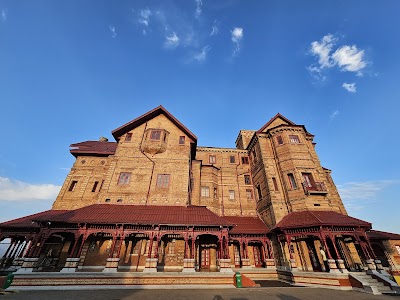
Amar Mahal Palace Museum
Jammu, India
- Admire the Dogra art collection
- Explore the palace museum
- Learn about the Dogra dynasty
- Relax in the palace gardens
- View the Tawi River from palace
Known for:
Description:
Amar Mahal Palace Museum is a majestic palace converted into a museum, showcasing a blend of European and Dogra architectural styles. It houses a rich collection of paintings, books, and artifacts, including a gold-plated throne and a library with over 25,000 books. The museum offers stunning views of the Tawi River and the surrounding landscape. Visitors can explore the palace's grand halls, intricate carvings, and terraced gardens. The museum also features a collection of Pahari miniature paintings and a section dedicated to the Dogra dynasty.
History:
Amar Mahal Palace was built in the late 19th century by Raja Amar Singh, the Dogra king. Designed by a French architect, it served as the royal residence. After the accession of Jammu and Kashmir to India, the royal family moved out, and the palace was later converted into a museum in 1975. It now houses the valuable belongings of the royal family, providing insights into their history and lifestyle. The palace stands as a testament to the rich heritage of the Dogra dynasty and the architectural influences of the time.